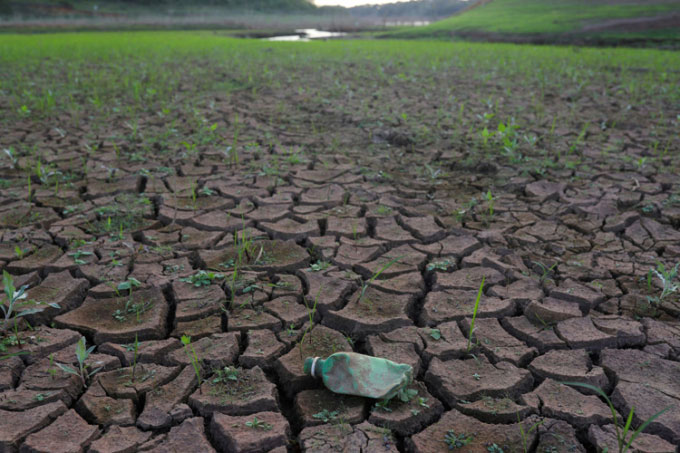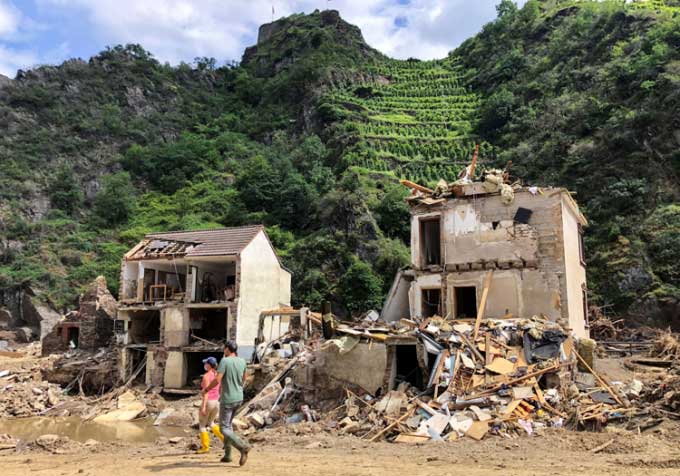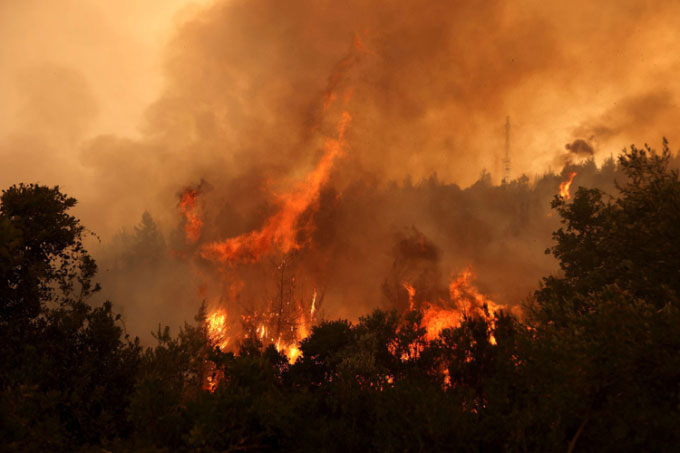If the Earth warms by 2 degrees Celsius instead of 1.5 degrees Celsius, humanity, wildlife, and ecosystems will face severe consequences.
At COP26 – the United Nations Climate Change Conference held in Glasgow, Scotland, from October 31 to November 12, world leaders repeatedly emphasized the necessity of limiting global warming to 1.5 degrees Celsius. With the Paris Agreement of 2015, countries committed to keeping the average global temperature rise below 2 degrees Celsius compared to pre-industrial levels, while also aiming for the 1.5 degrees Celsius target.

The parched ground of the Jaguari dam, part of the Cantareira water reservoir system, during a drought in Joanopolis, Brazil, on October 8, 2021. (Photo: Reuters/Amanda Perobelli)
Exceeding the 1.5 degrees Celsius threshold poses a risk of significantly more severe climate change impacts on humans, wildlife, and ecosystems. To prevent this from happening, global CO2 emissions must be reduced by nearly half compared to 2010 levels by 2030 and reach net zero by 2050. Scientists, financiers, negotiators, and activists at COP26 are discussing how to achieve and finance this ambitious goal.
The world has already warmed by approximately 1.1 degrees Celsius compared to pre-industrial times. Each of the last four decades has been warmer than any decade since 1850. “We have never experienced global warming like this in just a few decades. A 0.5-degree increase means more extreme weather events that may occur more frequently, be more intense, or last longer,” said climate scientist Daniela Jacob at the German Weather Service.
This year, torrential rains in China and Western Europe resulted in hundreds of fatalities. Hundreds more died as temperatures in the Northwest Pacific reached record highs. Greenland experienced significant ice melting events, the Mediterranean and Siberia were ravaged by wildfires, while many areas in Brazil suffered from record droughts.

Flooding destruction in Mayschoss, Germany, on July 29, 2021. (Photo: Reuters/Andreas Kranz)
Such impacts will worsen if temperatures rise to 1.5 degrees Celsius or more. “Climate change is already affecting every inhabited region of the world,” said climate scientist Rachel Warren at the University of East Anglia.
“With each increment of global warming, the changes in extreme weather events also become greater,” noted climate scientist Sonia Seneviratne at the Swiss Federal Institute of Technology (ETH Zurich).
For example, heatwaves will occur more frequently and intensely. An extreme heatwave that happens once every ten years in a climate unaffected by human activity will occur 4.1 times in a decade with a 1.5 degrees Celsius increase and 5.6 times with a 2 degrees Celsius increase, according to the Intergovernmental Panel on Climate Change (IPCC). If temperatures rise by an additional 4 degrees Celsius, this phenomenon could occur 9.4 times each decade.
A warmer atmosphere can also retain more moisture, leading to increased torrential rains and a higher risk of flooding. A warmer atmosphere also increases evaporation, resulting in more severe droughts.
The difference between 2 degrees Celsius and 1.5 degrees Celsius is crucial for the oceans and the Earth’s frozen regions.
“At 1.5 degrees Celsius, we are likely to prevent most of the ice sheets in Greenland and West Antarctica from collapsing,” explained climate scientist Michael Mann at Penn State University. This would help limit sea level rise by the end of this century, although the changes could still be significant enough to cause coastal erosion and inundate some small island nations and coastal cities.
However, ice sheets could collapse if the increase exceeds 2 degrees Celsius, Mann stated. In that case, sea levels could rise by up to 10 meters – although experts are uncertain how quickly this would happen.
A 1.5 degrees Celsius increase will destroy at least 70% of coral reefs, but with a 2 degrees Celsius increase, over 99% will die. This will devastate fish habitats and significantly impact communities that rely on coral reefs for their livelihoods.
The difference between 2 degrees Celsius and 1.5 degrees Celsius will also affect food production. “If several important grain-growing regions fail simultaneously, food prices could skyrocket and famine could occur in many large areas around the world,” observed climate scientist Simon Lewis at University College London.
A warmer Earth could allow mosquitoes that carry diseases like malaria and dengue fever to thrive and operate over a wider range. However, a 2 degrees Celsius increase would also lead to more insects and animals losing their habitats compared to a 1.5 degrees Celsius increase. The risk of wildfires, a threat to wildlife, also increases.

Flames rise during a forest fire in the village of Galatsona, Evia Island, Greece, on August 9, 2021. (Photo: Reuters/Nicolas Economou)
Global warming increases the risk of reaching “tipping points.” At that point, Earth’s systems exceed permissible thresholds, causing irreversible impacts. Scientists have not yet been able to determine exactly when the blue planet will reach these tipping points.
For example, drought, reduced rainfall, and the continuous destruction of the Amazon rainforest could lead to the collapse of the rainforest system, releasing CO2 into the atmosphere instead of storing it. Warming permafrost in the Arctic could cause long-frozen biomass to decompose, releasing large amounts of carbon gases.
“That is why continuing to use fossil fuels and emitting greenhouse gases is very risky. We are increasing the likelihood of exceeding one of these tipping points,” Lewis said.
So far, the climate commitments submitted by countries to the United Nations are pushing the world towards a 2.7 degrees Celsius warming threshold. The International Energy Agency (IEA) stated on November 5 that the new commitments announced at the COP26 summit – if implemented – could keep the increase below 1.8 degrees Celsius, although some experts remain skeptical of this estimate.
Warming the Earth by 2.7 degrees Celsius would lead to “unlivable” heat in tropical and subtropical regions at certain times of the year. Biodiversity would decline sharply, food security would diminish, and extreme weather events would become so severe that they would exceed the resilience of most urban infrastructure.


















































